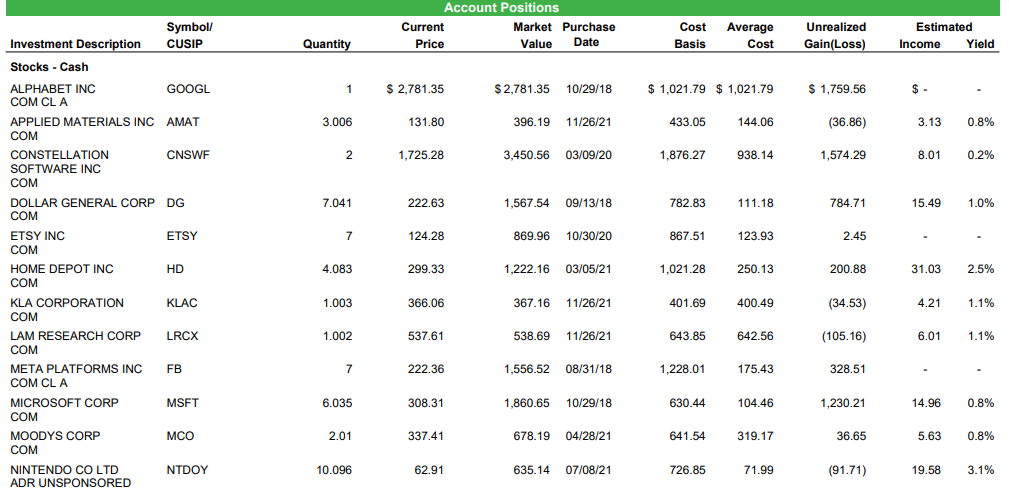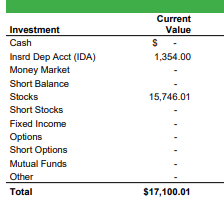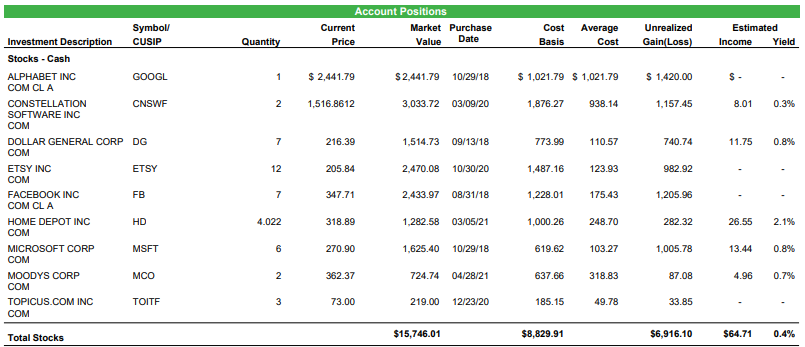Market enthusiasm sustained its momentum throughout the first quarter of 2024, with stock valuations continuing their upward trajectory. This persistent trend, despite stretching traditional valuation metrics, seems to be bolstered by the anticipated cuts in interest rates, suggesting that such market optimism might have a rational underpinning after all.
A notable observation during this period has been the increasing divergence between what could be termed the “real” economy and the “tech” economy. The real economy, grounded in tangible operations such as manufacturing, logistics, retail, and construction, is showing signs of vulnerability. Revenues and earnings in the “real” economy appear to be in a downturn, putting companies with weak balance sheets at significant risk. As usual, my suggestion would be to stick with companies that can withstand any economic calamity.
In contrast, the tech sector’s strength is more pronounced than ever. Leading this charge is NVIDIA, alongside the other megacap tech giants who all seem to have reported exceptional financial quarters. NVIDIA in fact, may have produced the single greatest quarter in the history of capitalism.

Despite my skepticism of the valuation going into earnings season, given the results, it is hard to argue with the moonbound stock performance. It is Jensen Huang’s world, and we are just living in it. I’m the sucker who has never owned any shares, so I’ve just looked on in envy.
This scenario prompts a critical question: How large can the divide between the “tech” and “real” grow before it becomes unsustainable? It is reasonable to assume that the tech sector’s prosperity is at least somewhat reliant on the broader economy’s health. If traditional businesses are struggling, one might wonder about the sustainability of ad revenues on platforms such as Facebook and Google. How about the demand for advancements in semiconductor technology if the wider economy cannot support these innovations?
As we look ahead, the economic landscape remains uncertain, yet I maintain a stance of cautious optimism. The market has seen substantial growth since COVID brought on the woes of 2020, suggesting a correction in time is inevitable. Nonetheless, by understanding these dynamics and maintaining a balanced perspective, we can navigate the potential volatility ahead. The juxtaposition of the tech and real economies highlights the need for a nuanced approach to investing, reminding us of the importance of adaptability and prudence in our investment decisions.
Q1 Performance
As of 4/1/2024, my 10K portfolio was worth $23,311.34. When I started on 8/19/2018, the SPY had a price of $285.06 and my account started with $10,000. As of 4/1/2024 the SPY had a price of $522.16. In reality, the SPY has done even better due to dividends given out, so I have accounted for dividend reinvestment in the return calculation.
| 10K Return(1) | SPY Return(2) | Difference(1-2) | |
| 2018(8/19-12/31) | (13.95) | (13.71) | (.24) |
| 2019 | 37.33 | 32.6 | 4.73 |
| 2020 | 21.22 | 17.59 | 3.63 |
| 2021 | 38.55 | 28.43 | 10.12 |
| 2022 | (27.25) | (18.65) | (8.60) |
| 2023 | 41.36 | 26.72 | 14.64 |
| 2024(1/1-3/31) | 14.28 | 10.82 | 3.46 |
| Since Inception(8/19/18) | 133.11 | 101.18 | 31.93 |
| CAGR | 16.27 | 13.25 | 3.02 |
As we can see, my portfolio continues to do extremely well, outperforming the SPY on both a short and long term basis. I beat the SPY by 3.46% this past quarter and am up almost 32% on the index since inception. I’m proud of this performance, but of course past performance is not indicative of future results. I can’t afford to become complacent, I need to stay aware of how my companies are performing and what the proverbial threats might lurk around the corner.
As noted before, megacap tech stocks continue to dominate. My investments into GOOGL, AMZN, META, and MSFT have all borne significant fruit. All sit at, or are at least very close to all time highs. This is not a fluke, their business performances have been remarkable and their stocks deserve to be trading at these highs. As noted last quarter, Constellation Software is by far my largest holding, continuing its impressive success.


Transactions
For the first time in a while, I made a couple of portfolio adjustments. I am generally slow to make any changes, but sometimes a company’s performance, or lack thereof, makes it necessary.
DG- For a while now, I haven’t loved the results coming out of Dollar General. Following another quarter of disappointing results, I decided to divest from the company. Company’s must earn their spot in the portfolio, past performance does not promise perpetual inclusion.
Dollar General’s growth has slowed in recent years, but more concerning is the compression in margins, Gross margins have held pretty steady, but operating margins have dropped considerably. I want to invest in companies with growing profit margins, not falling. The balance sheet is also in worse shape than it was in years past. 5 years ago DG had under $3B in debt, that now stands at over $6.2B.
Overall, I think the company sits in a worse financial and competitive position than they did five years ago. They aren’t going anywhere and it would not shock me to see the company return to greatness, but if they do, they will do so without me as a shareholder.
EVVTY- I’ve been following Evolution Gaming for a while now and after a notable stock price drop, I decided to pull the trigger. Evolution is a Swedish juggernaut, a market leader in the live online casino space. Evolution utilizes technology to offer immersive casino services for players from the comfort of their homes. With a strong presence in Europe and expanding global operations, Evolution is a dominant player in the space.
Financially, there is a lot to like about this company. They grow revenue and earnings each and every year, leading to an ever growing horde of cash. They now sit on a cash balance greater than total liabilities, the kind of balance sheet investors dream about.

As seen above, operating income has exploded, with extreme operating margin expansion, more than doubling in 6 years’ time. This shows that for every dollar of revenue generated, over 63 cents flows directly into operating profit. You won’t find many companies with this kind of profitability, simply incredible.
As always, I would like to thank you for taking the time to give this a read! Feel free to leave some comments or questions. Best way to reach me is on Twitter, follow me @TheGarpInvestor.




















